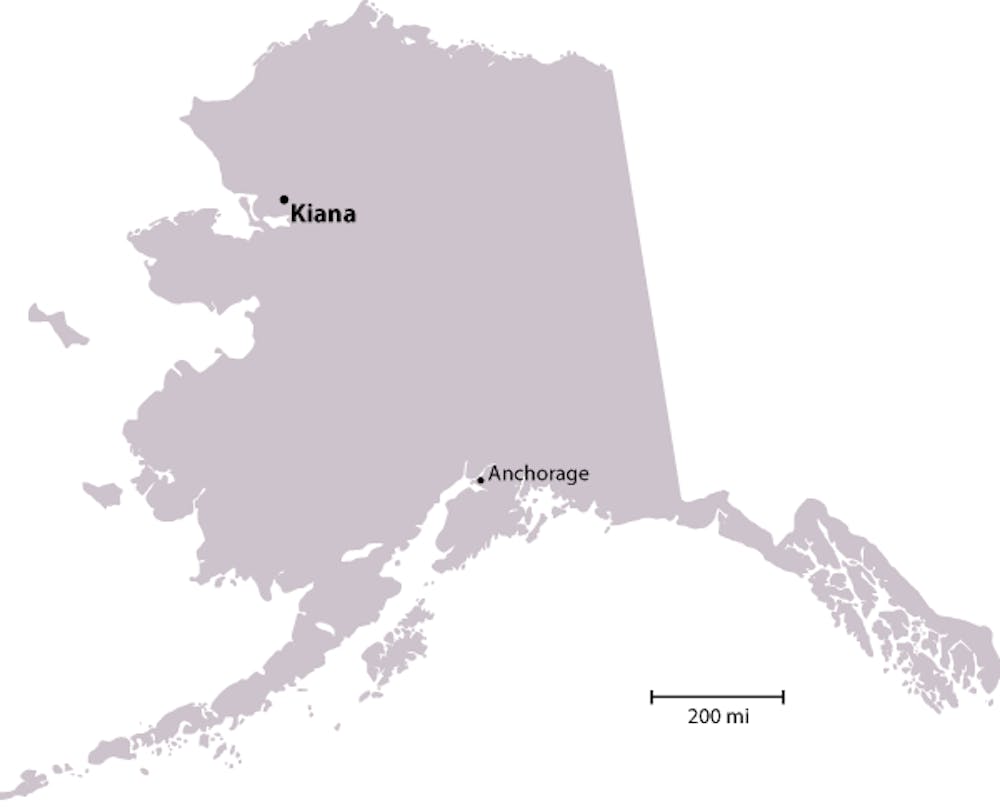This summer, Professor of Anthropology Douglas Anderson led the first research-driven excavation of Native American human remains from a national park as part of a three-year-old archaeological dig.
He, along with scientists from a myriad of other fields, have worked to excavate the site of what was once a regional capital of Northwest Alaska, said Edward Cleofe ’15, who worked with Anderson this summer.
Research on the site, which was inspired by local folklore, began in 2010, Cleofe said. Even though the village, which was likely inhabited throughout the 18th and 19th centuries, had been buried, local people knew of its existence, he said. “This village was never really lost,” Cleofe said.
Between 150 and 250 people likely lived in the village, making it very large for its time. The remains show that the capital consisted of approximately 50 subterranean house pits that were designed as winter accommodation, Cleofe said.
Thomas Urban ’05, the Weidenfeld Research Fellow at Oxford University and a former student of Anderson’s, became a part of the project in 2010 when Anderson asked him to do geophysical mapping of the site. Urban compared geophysical mapping to a doctor doing an X-ray versus performing surgery, noting that it gave the researchers a “much more complete picture” of the site before excavating all of it. The site is unique because of how large and complex it is, Urban said.
Physical excavation of the site began in 2011, but ended when the remains of two humans were found, Urban said.
There are very tight restrictions on research of Native American human remains due to the Native American Graves Protection and Repatriation Act, Cleofe said.
The researchers along with the local people of Kiana — the town nearest to the excavation site — had to convince the federal government to allow them to continue with the dig, said Zoe Weiss ’12 MD’16, who traveled to Alaska with Anderson’s team in 2011.
The researchers were unable to return to the site until this past summer, Cleofe said.
‘A real legend’
The continuation of the excavation was made possible in part by the relationship Anderson had developed with the local people of Kiana, Cleofe said.
The local people wanted the excavation to continue, Weiss said. “It’s very special when a group of people want archaeologists to continue excavating.”
Becky DeAngelo ’96, a museum assistant in the archaeology division of the Yale Peabody Museum, has worked with Anderson on the site over the past 20 years. She said working with locals who want the project to be done is “a very satisfying way to do archaeology.”
Cleofe said when he went into the village of Kiana, people would stop him in the street to ask whether he was working with Anderson. When Cleofe answered affirmatively, they were excited, he said.
Local people in Kiana go to hear Anderson speak to them in -30 degrees F and complete darkness during the winter, he added.
Kiana residents have also come to work on the site, Urban said, adding that Anderson is “a real legend in this region.”
Tracking the past
The researchers all called the excavation important to both the scientific world and to the local people.
Weiss said because the village was inhabited during the beginning of European contact in the region, the goal of the excavation is to examine trade routes by tracking the source of the items found during excavation.
Researchers found glass beads in one house and tools with metal heads in another, Cleofe said. Both items would have been acquired through trade with Europeans but dated to a time before European contact, he said. This discrepancy is “evidence of a huge trade network,” he said.
Weiss also said the excavation is important because knowledge gained about the subsistence patterns and peoples’ interactions with the ecology of the area can be compared to the behavior of people who live there today.
The researchers all said they feel the excavation is important for current Kiana locals. “There is a huge amount of value in having information about ancestors,” Cleofe said, “and that information has been largely erased by colonialism. Professor Anderson has connected that to their lives in finite ways.”
‘Only time will tell’
Both Cleofe and DeAngelo said they fear the project will come to a close when Anderson, who is now 78 years old, retires. Cleofe said Anderson’s last field season is in 2013, and DeAngelo said that if the Department of Anthropology does not hire another arctic archaeologist, “the connection is going to be lost.”
DeAngelo said Anderson is “so modest” you would never know how influential he has been in arctic archaeology. “He doesn’t really like to draw attention to himself, but he has contributed greatly to the field,” she said.
There is “a glimmer of hope that someone will be able to go up and continue the work being done,” Cleofe said, “but only time will tell.”
Anderson was out of town at the time of this article and could not be reached for comment.

ADVERTISEMENT




